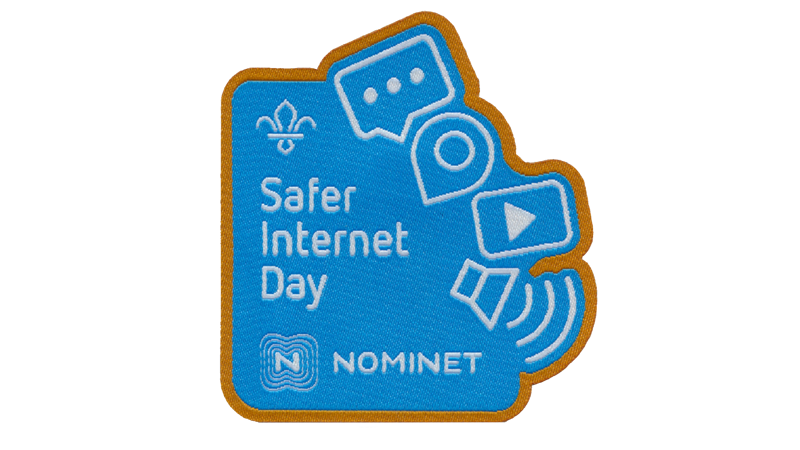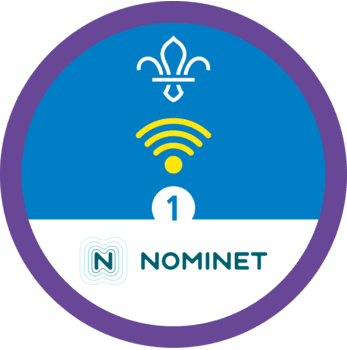
Explore the impact of online content
You’ll need
- Coloured pens or pencils
- Pens or pencils
- A4 paper
- Masking tape
- Sticky notes
- Copies of the Worksheet Resource
Before you begin
- Use the safety checklist to help you plan and risk assess your activity. Additional help to carry out your risk assessment, including examples can be found here. Don’t forget to make sure all young people and adults involved in the activity know how to take part safely.
- Make sure you’ll have enough adult helpers. You may need some parents and carers to help if you’re short on helpers.
Planning this activity
- Make sure there’s enough copies of the printed worksheets for your group, depending on if you’re working in pairs or small groups.
- Use masking tape to create a line on the floor. It will be used as a scale for people to stand on to show whether they agree or disagree, so needs to be big enough for people to stand on. You could also use cones or markers, placed at equal distances from each other.
- Write these four statements on pieces of paper and display them on the scale, placing them at equal distances: ‘Completely disagree’, ‘Somewhat disagree’, ‘Somewhat agree’ and ‘Completely agree’.
Running the activity
- Gather everyone together and ask everyone who has accessed the internet today. What did they use it for? Do they use the internet every day and what benefits does it have?
- Ask everyone what technology and devices they own and use. People should think about what technology they have in their home, how often they use it, how it makes them feel and how it helps them. They could talk to a partner about this or some people could share their answers with the group.
- Tell everyone that today you’re going to think about how online content influences our thoughts, emotions, and behavior.
- Give out the worksheets and ask everyone to read through the statements. People could do this as a whole group, in small groups or in pairs, depending on how many copies you have.
- Ask someone to read out the words in bold. They are:
-
- Loot boxes - mystery boxes containing a random selection of items which can be purchased with real money, or credits built up within a game.
- Influencers - a person with the ability to influence potential buyers of a product or service by promoting or recommending the items on social media
- Suggested content - suggested content aimed at you in places, such as on social media and YouTube. These suggestions are based on different things, such as your activity, the accounts you follow, and what you've liked, saved or commented on.
- Friends talking about an online trend - In social media, a Trend refers to a post, topic, or an idea that is hyped or popularised for a certain period. Its popularity can be based on the number of times that internet users posted, discussed, talked about, or shared contents related to the topic. These trends may be spoken about or referred to by your friends or people you know.
- Targeted advertising - adverts that are shown to you based on the personal data your device or companies have collected about you, such as based on what you’ve bought before, who you follow, what you search for or what you like on social media.
- Unrealistic beauty standards - Social media platforms often feature images of people with seemingly perfect faces and bodies, often using filters and photo editing tools to enhance their appearance. This can create unrealistic beauty standards and put pressure on people to look a certain way.
- After each of the topics has been read out, ask if anyone knows what any of them are and what they mean. Make sure everyone understands what each one is and what they mean.
- Individually, people should take six sticky notes and write the words in bold onto each one. Ask people to rank them in order of how much they’d be influenced by them by sticking them in a line in front of them, going from most likely to least likely.
- Now, show everyone the scale on the floor. Ask everyone if they think each of the words in bold would influence them. Once they’ve written the sticky notes, they should place them on the larger scale as to how much they agree with whether that thing would influence them.
- Give each group or pair one of the topics and ask them to discuss it. They can make notes about their ideas. They should think about each of the following things:
-
- how this topic might this influence someone in the moment
- how this topic might repeatedly change someone’s behavior over a week
- how this topic might repeatedly change someone’s behavior over a month
- how this influence might make someone feel
- how positive the influence is
- how negative the influence is
- what factors might change whether a young person is influenced by the topic
- Once everyone is ready, after a few minutes, people should get back together as a whole group. Someone from each small group or pair should share their ideas with the wider group. If no-one from the group wants to share, that’s OK. A young leader or adult volunteer could read out their ideas.
- As each team takes turns to talk through their notes about each bullet point, everyone else could stand on the scale to show whether they agree or disagree on what's being said. This could prompt some more questions and discussions too.
- Now, ask everyone to think about the topic they discussed. Ask people to think about the advice they would give to someone who felt they were being negatively influenced by this. Again, people could share their ideas and everyone else could show if they agreed or disagreed by standing on the scale.
Reflection
This activity was all about how the content we see online can impact us. Online content can help us to learn something new, find out about our friends, share photos, listen to music, watch videos or play games. However, it might also make us spend money we don’t need to, put pressure on ourselves, or influence us to buy something. It might also influence how we act or behave.
Think about the keywords and topics we learned about. Did you know what they were called and that they have a name? Had anyone known what they are before today? A lot of these things are marketing techniques, which make us want to buy something or go somewhere. Did you know these techniques existed? Have you ever tried to avoid been influenced by them?
Sometimes these things might help us. What benefits can they have? For example, targeted advertising might help us find that thing we forgot about, or suggested content might find a new song we like based on what we listen to.
However, a lot of these things can be bad for us. What negative or unhealthy impacts do you think they can have on people or make them feel, especially young people? They might make us spend money we don’t need or do something we don’t want to do, just because other people are. Has anyone ever been influenced by something online, either to put pressure on themselves or to buy something?
We can help protect ourselves from these techniques by learning about them. What will you do in the future to be wary of these techniques and how they can impact us? What will you tell someone else about them to help make sure everyone is using technology in a healthy way? Think about what your top 5 tips would be.
Safety
All activities must be safely managed. You must complete a thorough risk assessment and take appropriate steps to reduce risk. Use the safety checklist to help you plan and risk assess your activity. Always get approval for the activity, and have suitable supervision and an InTouch process.
- To make this activity easier, you could go through each statement and answer questions as a whole group or make the groups bigger to offer more support.
- To make this activity harder, young people could debate either ‘for’ or ‘against’ on one of the chosen topics.
- You could have different ways for people to present their ideas, other than writing. Could they use magazines and newspapers to create a collage, draw or act?
- Some people may need large print copies of the cards, such as if they have a visual impairment. You could make the cards larger and use light coloured paper, such as white, to make them easier to read.
- Remember, not all young people will have the same experience, access or knowledge when it comes to technology. Each person’s grownups may also have different rules around their young person’s use of technology. Make sure to check that everyone understands what everything means and what everything is.
- This activity might involve lots of sitting and listening. Make sure to take movement breaks in between the questions and let people sit how they feel most comfortable, including lying down.
All Scout activities should be inclusive and accessible.
Why not try some of our other internet safety activities with Nominet? Consider rewarding the group with the blanket badge
People could create and add their own topics around technology, social media and using the internet that could be discussed, such as online bullying. Take a look at our digital safety advice for young people and our other online safety activities with Nominet.
